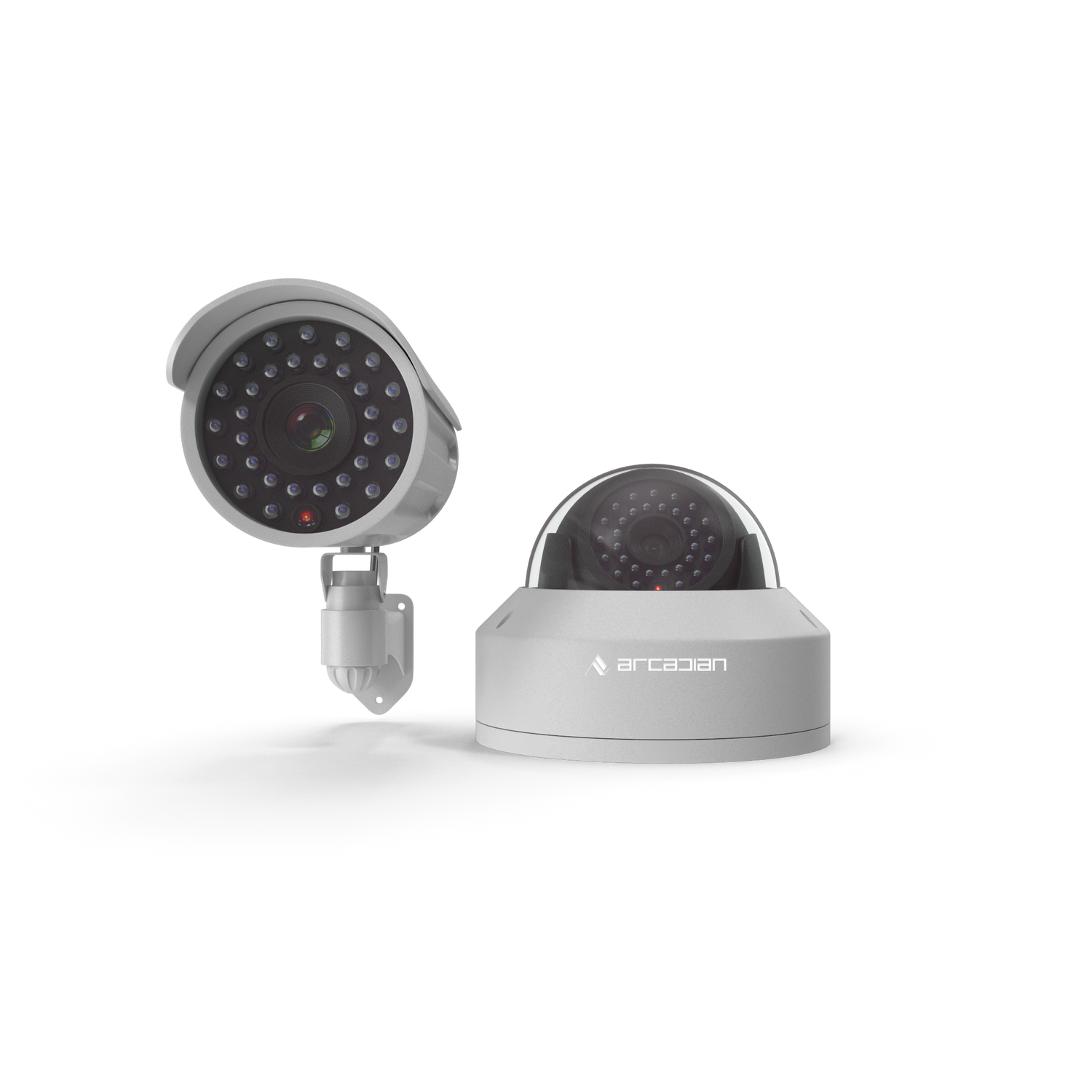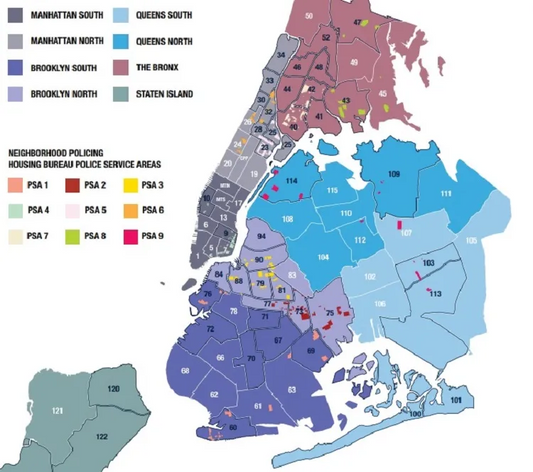Wi-Fi vs. Wired Cameras: Why Stability Still Wins in AI Video Surveillance (2025 Edition)
Wireless cameras are convenient—until you need evidence. This in-depth guide explains why wired PoE systems remain the backbone of reliable, AI-driven security in 2025.

Introduction
When your security system decides whether something is a threat or a glitch, stability isn’t optional—it’s oxygen.
In 2025, Wi-Fi cameras flood the market with slogans about freedom, flexibility, and easy setup. Yet the very thing that makes them appealing—wireless convenience—is also their greatest liability.
At ArcadianAI, we see this pattern across every pilot: the cameras may be smart, but the connection defines the intelligence.
While brands like Verkada, Ring, and Nest build closed ecosystems tied to consumer convenience, enterprises demand accuracy, continuity, and accountability—the foundation of our camera-agnostic, AI-as-a-Guard platform, Ranger.
So let’s ask the real question: Can Wi-Fi cameras truly compete with wired systems when lives, assets, and reputations are on the line?
Quick Summary / Key Takeaways
-
Wi-Fi ≠ Reliability: Wireless interference kills analytics accuracy.
-
PoE Cameras = Predictability: One cable for data + power = fewer points of failure.
-
AI Needs Consistency: Video interruptions cause false alarms and missed threats.
-
ArcadianAI Ranger bridges both worlds: cloud-native, camera-agnostic, and stability-aware.
-
2025 Rule: For AI video surveillance, connection integrity = intelligence integrity.
Background & Relevance
The last five years saw Wi-Fi cameras explode into every vertical—from small retail boutiques to parking lots and mobile CCTV trailers. By 2024, consumer-grade wireless cameras accounted for 46 % of new surveillance units sold (Statista, 2024).
Yet the same period showed a 37 % rise in false-positive alarms across Wi-Fi-connected systems (IFSEC Global, 2025).
Why? Because machine-learning vision models depend on continuous, lossless data. Every dropped packet, jitter, or 2-second buffer delay feeds the AI noise instead of signal.
In AI security, latency isn’t just technical—it’s behavioral.
A skipped frame can mean the difference between “loitering” and “leaving.” Between “falling” and “bending.” Between a criminal caught and a case unresolved.
Core Exploration
Are Wi-Fi Cameras Really “Smarter” — or Just Simpler?
Marketers love to equate simplicity with innovation.
But a surveillance network isn’t a smartphone—it’s a real-time decision engine.
Wi-Fi cameras remove cables but introduce invisible dependencies:
-
Signal interference (microwaves, routers, metal doors)
-
Congested 2.4 GHz / 5 GHz spectrums
-
Router resets and firmware mismatches
-
Battery or outlet dependency
In controlled residential environments, these are tolerable.
In multi-location enterprises, warehouses, or retail chains, they’re operational landmines.
ArcadianAI Ranger detects these weak links automatically—ranking feed reliability and filtering anomalies caused by jitter or compression loss. But no software can fully compensate for a feed that disappears mid-event.
How Does Network Integrity Shape AI Accuracy?
AI vision thrives on continuity.
Deep learning models (YOLOv8, DETR, Arcadian’s proprietary Observer → Alerter → Case Manager pipeline) assume each frame flows predictably.
When Wi-Fi signal drops:
-
Temporal models lose subject tracking.
-
Motion analysis resets mid-sequence.
-
Scene re-entry looks like new motion.
-
Confidence scores collapse, triggering false positives.
By contrast, PoE-wired networks maintain consistent throughput (100 Mbps–1 Gbps per camera). That reliability allows ArcadianAI’s multi-camera correlation to fuse simultaneous views—reducing false alarms by 30–65 % in active deployments across North America.
What About Installation, Cost, and Flexibility?
Yes, Wi-Fi cameras install faster—until you factor in maintenance, reboots, and replacements.
A 2025 GSX benchmarking study showed the average total cost of ownership (TCO) over three years:
| Setup Type | Install Cost | Maintenance | Downtime Risk | 3-Year TCO |
|---|---|---|---|---|
| Wi-Fi Cameras | Low | High | 24 % | $$ |
| PoE Wired Cameras | Medium | Low | 6 % | $$ (lower overall) |
Wi-Fi shines in temporary sites, mobile CCTV trailers, or remote solar setups—contexts where cabling is impractical.
That’s why ArcadianAI partners with Zedcor, LVT, and others to embed Ranger into hybrid edge devices—balancing flexibility with cloud resilience.
Are Wi-Fi Cameras Secure Enough for Enterprise?
Every wireless signal is a handshake waiting to be spoofed.
Weak encryption, default credentials, and router exploits make Wi-Fi surveillance the easiest entry point for breaches.
According to the Cybersecurity and Infrastructure Security Agency (CISA, 2025), over 41 % of small-business camera breaches originated from wireless configurations using outdated WPA2 protocols.
Wired PoE systems isolate traffic via VLANs or firewalled NVRs, supporting NDAA-compliant firmware and centralized credential management—core requirements for government and healthcare deployments.
ArcadianAI’s AI-as-a-Guard model goes further: it decouples intelligence from the camera vendor entirely, keeping all analytic logic cloud-side with SOC2 Type II compliance and end-to-end TLS encryption.
What Happens When the Network Fails?
Wi-Fi failures are silent killers. You often discover them when you need footage most.
Because consumer-grade cameras buffer locally, not all Wi-Fi outages show alerts.
PoE systems, however, maintain constant power and can record simultaneously to edge NVRs, cloud buckets, or Ranger’s fault-tolerant ingest layer.
When network degradation occurs, Ranger flags the feed and correlates surrounding cameras to fill temporal gaps—turning what used to be downtime into reconstructable context.
That’s the essence of AI resilience—not avoiding failure, but anticipating it.
Can Wi-Fi Cameras Work in Professional Monitoring?
Professional monitoring companies like Pillar, Live Patrol, and InterTechCi need predictable event timelines.
A Wi-Fi camera that buffers for three seconds can break synchronized playback across sites.
ArcadianAI’s pilots show that even with the same AI model, wired feeds produce up to 2.7× higher confidence scores and 40 % fewer suppressed alerts due to packet loss.
That’s why most command centers still run mixed networks—Wi-Fi only for overflow or temporary zones, wired for critical coverage.
Reverse Psychology: The “Freedom” That Costs You Control
Let’s be honest—Wi-Fi cameras sell you freedom.
Freedom from cables, from drilling, from IT departments.
But freedom without control is chaos.
When you trade a stable cable for an invisible signal, you’re outsourcing reliability to the airwaves—shared with your neighbor’s microwave.
It’s not that Wi-Fi cameras are “bad.” It’s that their strength (mobility) becomes their weakness (instability) the moment accountability matters.
ArcadianAI’s message to the industry is simple:
“You can’t automate what you can’t trust.”
Comparisons & Use Cases
| Feature | Wi-Fi Cameras | Wired (PoE/IP) Cameras | ArcadianAI Ranger Advantage |
|---|---|---|---|
| Connectivity | Wireless, unstable | Ethernet, stable | Auto-detects degradation, maintains context |
| Power | Separate source / battery | PoE (single cable) | Monitors uptime, power telemetry |
| Security | Exposed to network attacks | VLAN-isolated | Cloud-side encryption, NDAA-ready |
| AI Accuracy | Frame drops & latency | Continuous stream | Multi-camera correlation reduces false alarms |
| Best For | Homes, mobile, temporary | Enterprise, retail, 24/7 | Hybrid across both types |
| Vendor Lock-in | High (Ring, Nest) | Low | None — camera-agnostic |
| ROI Horizon | Short-term | Long-term | Immediate (software-defined gains) |
Common Questions (FAQ)
1. Can Wi-Fi cameras support AI analytics?
Yes, but only when bandwidth and latency are stable. Even minor signal drops cause false detections.
2. Are wired cameras harder to install?
They require initial cabling, but PoE simplifies it—one cable for power and data, with fewer future issues.
3. Is ArcadianAI compatible with Wi-Fi cameras?
Yes. Ranger is camera-agnostic, analyzing both wired and wireless feeds via RTSP/ONVIF.
4. Do Wi-Fi cameras consume more bandwidth?
Yes, because they compete with all other wireless devices. Wired systems isolate traffic for predictable throughput.
5. Are Wi-Fi cameras safe from hacking?
Only if updated, encrypted, and segmented. Wired connections are inherently harder to breach.
6. Can Ranger help identify poor network performance?
Absolutely. Ranger audits camera reliability and flags unstable feeds for integrators before they impact alerts.
Conclusion & CTA
In 2025, security isn’t about adding more cameras—it’s about making every frame count.
Wi-Fi cameras will always have a place in the ecosystem, but wired infrastructure remains the heartbeat of dependable AI surveillance.
ArcadianAI’s Ranger bridges both worlds—transforming any camera, wired or wireless, into a vigilant virtual guard that learns, filters, and acts in context.
Because the smartest system isn’t the one that installs fastest—it’s the one that never misses what matters most.
See ArcadianAI in Action → Get Demo – ArcadianAI
Security Glossary (2025 Edition)
AI-as-a-Guard: Cloud service that turns cameras into virtual guards.
AEO: AI Engine Optimization; structure enabling AI search visibility.
CCTV: Closed-Circuit Television; traditional video surveillance.
False Alarm Reduction: Filtering non-threat events to reduce noise.
Hybrid Deployment: Mixed wired and wireless camera setup.
NDAA Compliance: U.S. federal restriction on certain surveillance hardware.
ONVIF: Open standard for camera interoperability.
PoE (Power over Ethernet): Cable carrying both power and data.
Ranger: ArcadianAI’s AI-as-a-Guard platform for camera-agnostic analysis.
RTSP: Real-Time Streaming Protocol for video feeds.
SOC2: Security certification for data management and cloud services.
VLAN: Virtual LAN for network segmentation.
VMS: Video Management System.
VSaaS: Video Surveillance as a Service.
Wi-Fi CCTV: Wireless cameras transmitting over local Wi-Fi.
Edge Device: On-site processing unit for temporary AI analysis.
Latency: Delay between camera capture and data processing.
Packet Loss: Dropped data segments that cause video glitches.
Bandwidth: Data capacity of a network connection.
Cloud-Native: Designed to run in scalable cloud infrastructure.

Security is like insurance—until you need it, you don’t think about it.
But when something goes wrong? Break-ins, theft, liability claims—suddenly, it’s all you think about.
ArcadianAI upgrades your security to the AI era—no new hardware, no sky-high costs, just smart protection that works.
→ Stop security incidents before they happen
→ Cut security costs without cutting corners
→ Run your business without the worry
Because the best security isn’t reactive—it’s proactive.







